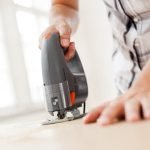Are you tired of dealing with dropped calls and poor reception at home? In this article, we will explore how to improve cell phone connection at home. A strong cell phone connection is essential for staying connected with friends, family, and colleagues, as well as for accessing important information and services. Poor cell phone reception can be frustrating and inconvenient, but there are steps you can take to address the problem.
Identifying the cause of poor cell phone reception is the first step in finding a solution. Common issues that lead to poor reception include distance from cell towers, interference from household items, and network provider issues. In the following sections, we will cover how to identify these problems and what steps you can take to improve your cell phone connection.
In addition to understanding the root cause of poor reception, exploring alternative methods for improving your cell phone connection at home is crucial. From utilizing Wi-Fi calling to installing a signal booster and considering other technologies or techniques, there are numerous options available to enhance your cell phone signal strength. By taking proactive measures and implementing these solutions, you can ensure a reliable and stable connection for all your communication needs.
Identifying the Problem
A weak cell phone signal at home can be frustrating, especially when it disrupts important calls or causes messages to fail. There are several common issues that can cause poor cell phone reception. One of the most prevalent causes is geographic location.
If you live in a rural area, surrounded by hills or tall buildings, you may experience difficulty in maintaining a strong cell phone connection. Similarly, if your home is located in a basement or an area with thick concrete walls, it can hinder the signal from reaching your device.
In addition to geographical barriers, another common cause of poor cell phone reception is network congestion. This occurs when too many devices are trying to connect to the same cell tower at once, leading to a weakened signal for all users. Furthermore, weather conditions such as heavy rain or snow can also contribute to poor cellular reception. These factors can disrupt the communication between your device and the nearest cell tower, causing dropped calls and slow internet speeds.
Moreover, electronic interference from household appliances and electronic devices can also impact your cell phone signal. Microwave ovens, cordless phones, and even fluorescent lights emit electromagnetic waves that can interfere with cellular signals within close proximity. Understanding these common issues that cause poor cell phone reception is the first step towards improving your overall connectivity at home.
Checking Your Network Provider
When experiencing poor cell phone reception at home, it is important to first determine if your network provider is the root cause of the issue. One way to check this is by asking family, friends, or neighbors who are subscribed to the same network provider if they are also experiencing similar problems. If they are not, then it is likely that the issue is specific to your location or device.
Another way to assess your network provider’s role in the problem is by checking coverage maps provided by the company. These maps show areas with strong and weak signal strength, allowing you to see if your location falls within an area with poor coverage. Additionally, some network providers offer apps that allow users to test signal strength in their area and provide feedback on coverage issues.
In some cases, switching network providers may be necessary for improved cell phone reception at home. It’s important to research and compare different providers’ coverage maps and services before making a switch. Keep in mind that while some providers may have stronger signals in urban areas, others may have better coverage in rural or remote locations.
| Ways to Check Network Provider | Benefits |
|---|---|
| Ask family, friends, or neighbors | Free and easy way to gather information about network provider performance. |
| Check coverage maps | Alls you easily view areas of weak signal strength and make informed decisions about potential solutions. |
| Utilize provider apps | Offers real-time feedback on signal strength and potential coverage issues. |
Utilizing Wi-Fi Calling
Wi-Fi calling has become an increasingly popular option for individuals looking to improve their cell phone connection at home. This technology allows users to make and receive calls using a Wi-Fi network instead of relying solely on a cellular network. There are several benefits to utilizing Wi-Fi calling, especially in areas where cell phone reception may be weak or inconsistent.
Benefits of Wi-Fi Calling
One of the primary advantages of Wi-Fi calling is that it can significantly improve call quality, even in areas with poor cellular coverage. By leveraging a stable Wi-Fi network, users can experience clearer voice calls and reduced instances of dropped calls. In addition, Wi-Fi calling can also help conserve cellular data for those with limited data plans, as voice calls made over Wi-Fi do not count towards data usage.
Another benefit of Wi-Fi calling is the ability to send and receive text messages when cellular reception is lacking. With a strong Wi-Fi connection, users can stay connected through messaging apps and SMS even in areas where traditional cellular service may be subpar.
How to Enable Wi-Fi Calling
For those interested in taking advantage of Wi-Fi calling, it’s important to ensure that your device and carrier support this feature. Most modern smartphones offer built-in support for Wi-Fi calling, but it may need to be enabled in the phone’s settings. Additionally, some carriers may require you to register for the service or activate it through their website or customer service.
Installing a Signal Booster
A signal booster, also known as a cell phone signal repeater, is a device that improves cellular reception by amplifying the existing outside signal. It consists of an outdoor antenna, an amplifier, and an indoor antenna. Before purchasing a signal booster, it’s important to determine the strength of the existing outdoor signal in the area where the booster will be installed. This can be done using a smartphone with field test mode activated or with a signal meter device.
Once you’ve determined the strength of the outdoor signal, it’s time to choose the right signal booster for your home. There are different types of boosters designed for various sizes of homes and different levels of outside signal strength. Additionally, consider whether you need a booster that supports multiple carriers or if you’re looking for one specifically for your network provider.
After selecting the appropriate signal booster for your needs, it’s crucial to follow the manufacturer’s installation instructions carefully. Typically, the outdoor antenna is mounted on the roof or outside wall of your home and connected to the amplifier via a cable.
The amplifier is then connected to an indoor antenna, which broadcasts the amplified signal within your home. Proper installation is key to ensuring that the signal booster functions effectively and provides improved cell phone reception throughout your home.
| Signal Booster Installation Steps | Details |
|---|---|
| Determine Outdoor Signal Strength | Use smartphone with field test mode or a signal meter device |
| Choose Appropriate Signal Booster | Consider size of home, level of outside signal strength, and carrier support |
| Follow Manufacturer’s Instructions | Carefully install outdoor antenna on roof or wall, connect to amplifier, and connect to indoor antenna. |
Eliminating Interference
Interference from household items can significantly affect your cell phone signal, leading to dropped calls and poor call quality. Here are some tips on reducing interference from household items that may be affecting your cell phone signal:
1. **Relocate electronic devices**: Certain household electronics, such as microwaves and cordless phones, can interfere with your cell phone signal. Relocating these devices away from areas where you typically use your cell phone can help reduce interference.
2. **Use a different frequency**: If you have a wireless router or other wireless devices operating on the same frequency as your cell phone, it can cause interference. Consider changing the frequency of these devices to reduce signal interference.
3. **Keep metal objects away**: Metal objects such as aluminum siding, metal roofs, or even metallic window screens can interfere with your cell phone signal. Ensure that there are no metal barriers between your phone and the nearest cell tower to improve reception.
By implementing these tips and reducing interference from household items, you can improve your cell phone connection at home and enjoy clearer calls and better call quality. These simple adjustments can make a significant difference in your overall cellular experience within the comfort of your own home.
Positioning Your Phone
When it comes to improving your cell phone connection at home, the position of your phone can make a significant difference in reception. Here are some tips on where to position your phone and the best areas of your home to optimize cell phone reception:
1. Near a Window: Positioning your phone near a window can help improve cell phone reception as it allows for better signal penetration. If you’re experiencing poor reception, try moving closer to a window or using your phone near one for better connectivity.
2. High-Up Areas: In multi-story homes, being positioned on an upper level may provide better cell phone reception compared to lower levels. Higher-up areas typically have less interference from walls and obstructions, resulting in stronger signals.
3. Central Locations: For optimal coverage, positioning yourself in a central location within your home can help improve cell phone reception. This reduces the distance from your device to the nearest cell tower, ultimately enhancing signal strength.
In addition to considering where you position your phone within your home, it’s also important to mention that certain household items can interfere with cell phone signals. Common culprits include electronic devices, thick walls, and metal objects such as refrigerators or mirrors. Keep these factors in mind when choosing the best area and positioning for optimizing cell phone reception at home.
Alternative Solutions
When it comes to improving cell phone connection at home, there are several alternative methods and technologies that can be considered. In addition to utilizing Wi-Fi calling and installing a signal booster, there are other options that can potentially improve cell phone reception within the home environment.
Femtocell or Microcell Devices
One alternative solution for improving cell phone connection at home is to consider using a femtocell or microcell device. These devices work by creating a small, localized cell network within the home, providing a stronger signal for cell phones to connect to.
They essentially act as a mini-cell tower, allowing for improved reception and call quality within the immediate vicinity of the device. While these devices may come with an initial cost and require installation, they can be an effective solution for addressing poor cell phone reception in specific areas of the home.
External Antennas
Another option to consider is the use of external antennas to improve cell phone connection at home. External antennas, such as Yagi or omni-directional antennas, can be installed on the exterior of the home to capture and amplify cellular signals.
These antennas can then be connected to a signal booster or directly to a cellular device in order to enhance reception. By capturing signals from nearby cell towers and boosting them for use inside the home, external antennas can effectively improve overall cell phone connectivity.
Network Extenders
Network extenders, also known as range extenders or repeaters, are another alternative solution that can help improve cell phone connection at home. These devices work by receiving an existing cellular signal from outside the home, amplifying it, and then rebroadcasting it within the interior space.
By extending the reach of the original signal, network extenders can provide better coverage and improved reception throughout the home. They are relatively easy to install and can be an effective option for addressing poor cell phone connectivity in larger homes or areas with especially weak signals.
Considering these alternative methods and technologies alongside Wi-Fi calling and signal boosters can help address poor cell phone connection at home comprehensively. Each solution has its own unique benefits and considerations, so exploring all available options is key to finding the most suitable improvement for individual needs.
Conclusion
In conclusion, having a strong cell phone connection at home is essential in today’s digital age. Whether for work, staying connected with loved ones, or simply accessing important information, a reliable cell phone signal is crucial. By addressing common issues such as network provider issues and interference from household items, it is possible to improve cell phone connection at home.
One key takeaway from this article is the importance of checking your network provider to determine if they are the root cause of poor cell phone reception. It is crucial to evaluate their coverage and consider alternative providers if necessary. Additionally, utilizing Wi-Fi calling and installing a signal booster are effective methods for improving cell phone connection at home. By implementing these solutions, individuals can significantly enhance their connectivity.
As technology continues to advance, it is important for individuals to continuously explore alternative solutions for improving cell phone connection at home. This could include considering new technologies or methods that may become available in the future. Overall, having a strong cell phone connection at home not only improves communication but also enhances overall convenience and productivity in everyday life.
Frequently Asked Questions
How Can I Boost My Cell Phone Signal in My House?
There are a few ways to boost your cell phone signal in your house. One option is to use a cell phone signal booster, which can help amplify the existing signal and provide better coverage throughout your home.
Another option is to make sure that your router and modem are not interfering with your cell phone signal, as they operate on similar frequencies. You can also consider switching carriers if you consistently experience poor signal in your house.
How Can I Get Better Cell Phone Signal in My Mobile Home?
To get better cell phone signal in your mobile home, you can start by finding the best location within your mobile home to place your phone for the strongest signal. This may involve testing different spots near windows or outside walls.
Additionally, using a Wi-Fi calling feature if available on your phone and connecting to a reliable Wi-Fi network can help improve the signal indoors.
How Can I Improve My Mobile Signal Strength Indoors?
Improving mobile signal strength indoors can be achieved by using Wi-Fi calling, which allows you to make and receive calls over a Wi-Fi network instead of relying solely on cellular service. Another solution is to use a femtocell or microcell device provided by some carriers, which essentially creates a small cellular base station inside your home to improve coverage.
Lastly, positioning yourself near windows or moving closer to an outdoor area might also help boost your mobile signal strength indoors.

I’m thrilled to have you here as a part of the Remodeling Top community. This is where my journey as an architect and remodeling enthusiast intersects with your passion for transforming houses into dream homes.





